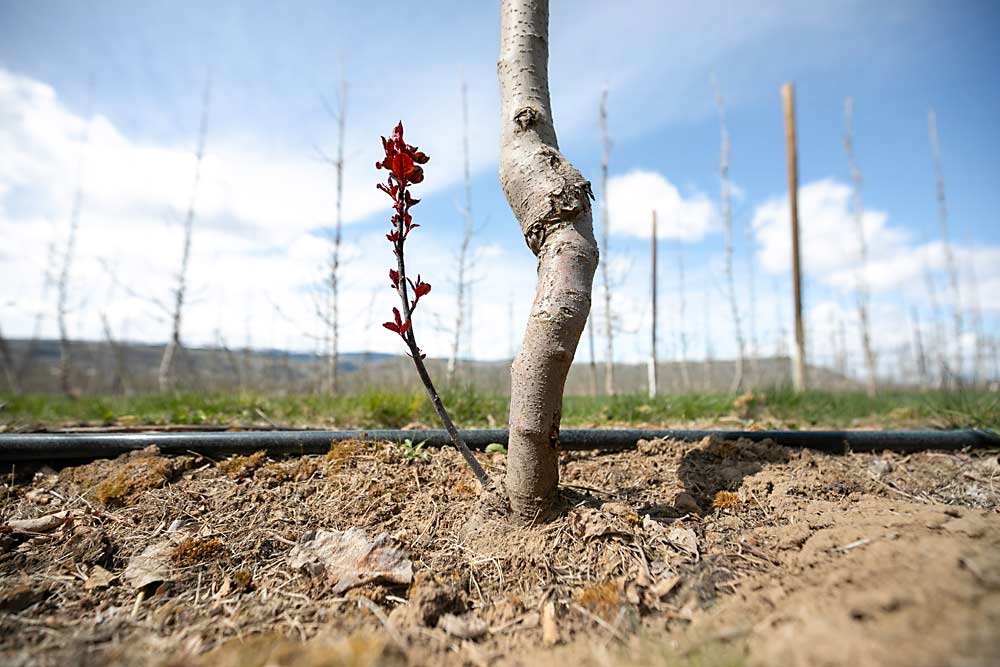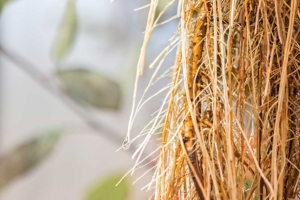
The Geneva apple rootstock breeding program released three new rootstocks this year.
Geneva 257, G.484, and G.66 have all performed well in trials and increase the diversity of the breeding program’s offerings, said Gennaro Fazio, a research geneticist with the U.S. Department of Agriculture’s Plant Genetic Resources Unit in Geneva, New York.
Fazio, lead researcher of the Geneva breeding program, which is managed by USDA and Cornell University, said virus-free budwood has been sent to licensed nurseries, and commercial quantities should be available within a couple of years. USDA can provide material, too. Interested growers should contact their nurseries.
Washington State University professor and physiologist Stefano Musacchi planted trials of the new rootstocks in Washington state, but the trees are young. He said he isn’t ready to comment on their performance, as he hasn’t yet seen them fruit.
The new releases expand the list of released Geneva rootstocks to 18, giving apple growers new options for conventional and organic production. Each of the new roots fits the “designer rootstock” niche — rootstocks designed to match specific scions, soils and climates, Fazio said.
Growers will always want “workhorse” rootstocks like G.11 and G.41 that they can use in any situation, but Fazio anticipates an increasing number seeking “designer” roots to fit their specific needs.
Here’s a summary of some of the new rootstocks’ characteristics:
—G.257 is semidwarfing. It was selected as a young seedling because it demonstrated resistance against phytophthora crown rot and fire blight. G.257 has been particularly successful, in terms of productivity and fruit size, with the New York 1 variety, a Cornell release limited to growers in New York and marketed as SnapDragon. Fazio said the main reason for the release of G.257 is so growers can pair it with NY 1.
—G.484 is semidwarfing. It appears to be a good choice on weak soils or under organic management, due to its uptake of nitrogen and potassium. Its potassium uptake would make it a poor fit with Honeycrisp but an excellent choice with other weak cultivars, because it can fill space rapidly and produce high yields. G.484 is highly productive, yield efficient and resistant to fire blight.
—G.66 is a semidwarfing, red-leafed, precocious and productive rootstock that is resistant to fire blight. In tests, it consistently rated high in horticultural performance and productivity. It appears to be a good choice for weak cultivars like Honeycrisp because it has a good ratio of potassium to calcium. It also would be good for multileader trees, since its vigor level will allow the trees to rapidly grow several leaders on each tree and fill space.
Good Fruit Grower reached out to several nurseries to ask about the new rootstocks. Some weren’t familiar with them or didn’t anticipate offering them until growers showed interest.
Sierra Gold Nurseries in Yuba City, California, has trial trees on the new rootstocks, but it will probably be a few years before they’re available in quantity as finished trees, said CEO Reid Robinson.
Cameron Nursery in Eltopia, Washington, will have the new rootstocks in production in small numbers by spring 2025 or 2026, with larger numbers available two or three years after that, said owner Todd Cameron.
—by Matt Milkovich








Leave A Comment